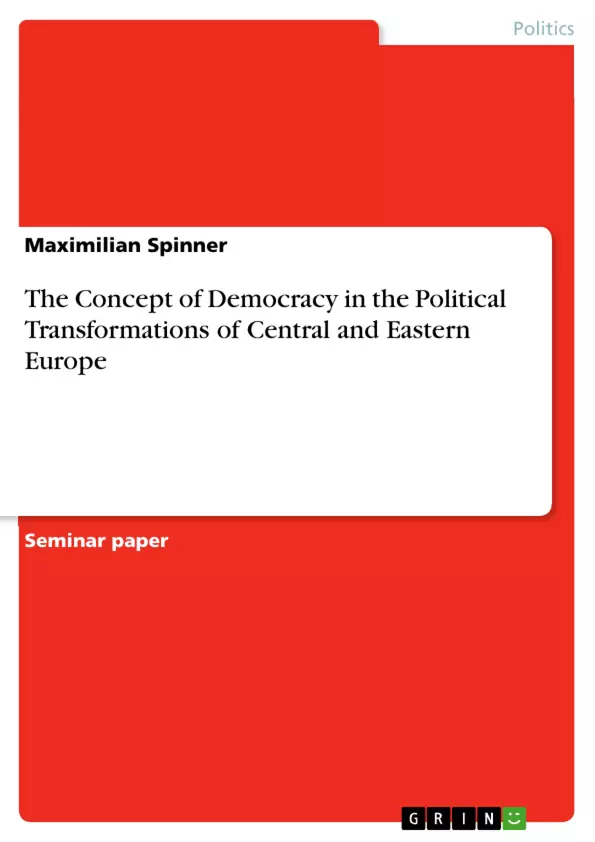Based on the Hungarian and Polish cases of negotiated transition to democracy in 1989/90 this essay looks into the philosophical concept of democracy pursued by the main protagonists.
Inhaltsverzeichnis (Table of Contents)
- Introduction
- Transformation to what kind of democracy?
- Poland and Hungary
- The Political Stalemate
- Revolution ruled out
- How ‘minimalist' was negotiated transition to democracy?
- The benefits of negotiated democratization
- The implications for the consolidation of 'negotiated' democracies
- Conclusion
Zielsetzung und Themenschwerpunkte (Objectives and Key Themes)
This paper focuses on the transition to democracy in Poland and Hungary, specifically examining the concept of democracy adopted during the round-table talks. The paper aims to understand why and how these transitions prioritized procedural aspects of democracy over broader societal participation. It explores the implications of this approach for democratic consolidation.
- The role of negotiated transitions in the democratization of Central and Eastern Europe
- The concept of democracy employed in the round-table talks
- The influence of historical context and political stalemate on the transition process
- The implications of a procedural approach to democracy for democratic consolidation
- The question of whether democracy can be introduced in a truly democratic way
Zusammenfassung der Kapitel (Chapter Summaries)
Introduction
This chapter introduces the context of the political transformations in Central and Eastern Europe, highlighting the peaceful transition from communist rule to democracy. The focus is on the round-table talks in Poland and Hungary, where negotiations between old and new elites resulted in an organized and peaceful regime change. The paper questions the democratic legitimacy of these talks, given the lack of broad participation, and aims to explore the underlying concept of democracy in these transitions.
Transformation to what kind of democracy?
This chapter delves into the nature of the transition to democracy in Central and Eastern Europe, particularly in Poland and Hungary. It discusses the concept of 'pacted' or 'negotiated' transitions, emphasizing the role of elite negotiations in shaping the course of democratization. The chapter explores the historical context leading to the round-table talks, including the crisis of communist rule, the emergence of opposition movements, and the influence of glasnost and perestroika in the Soviet Union. The chapter concludes by highlighting the significance of these negotiated transitions for the subsequent consolidation of democracy in the region.
Schlüsselwörter (Keywords)
The main keywords and focus topics of this work include: democratic transition, round-table talks, negotiated transition, procedural democracy, democratic consolidation, Poland, Hungary, Central and Eastern Europe, communist rule, opposition movements, glasnost, perestroika.
- Arbeit zitieren
- Maximilian Spinner (Autor:in), 2003, The Concept of Democracy in the Political Transformations of Central and Eastern Europe, München, GRIN Verlag, https://www.grin.com/document/12210



